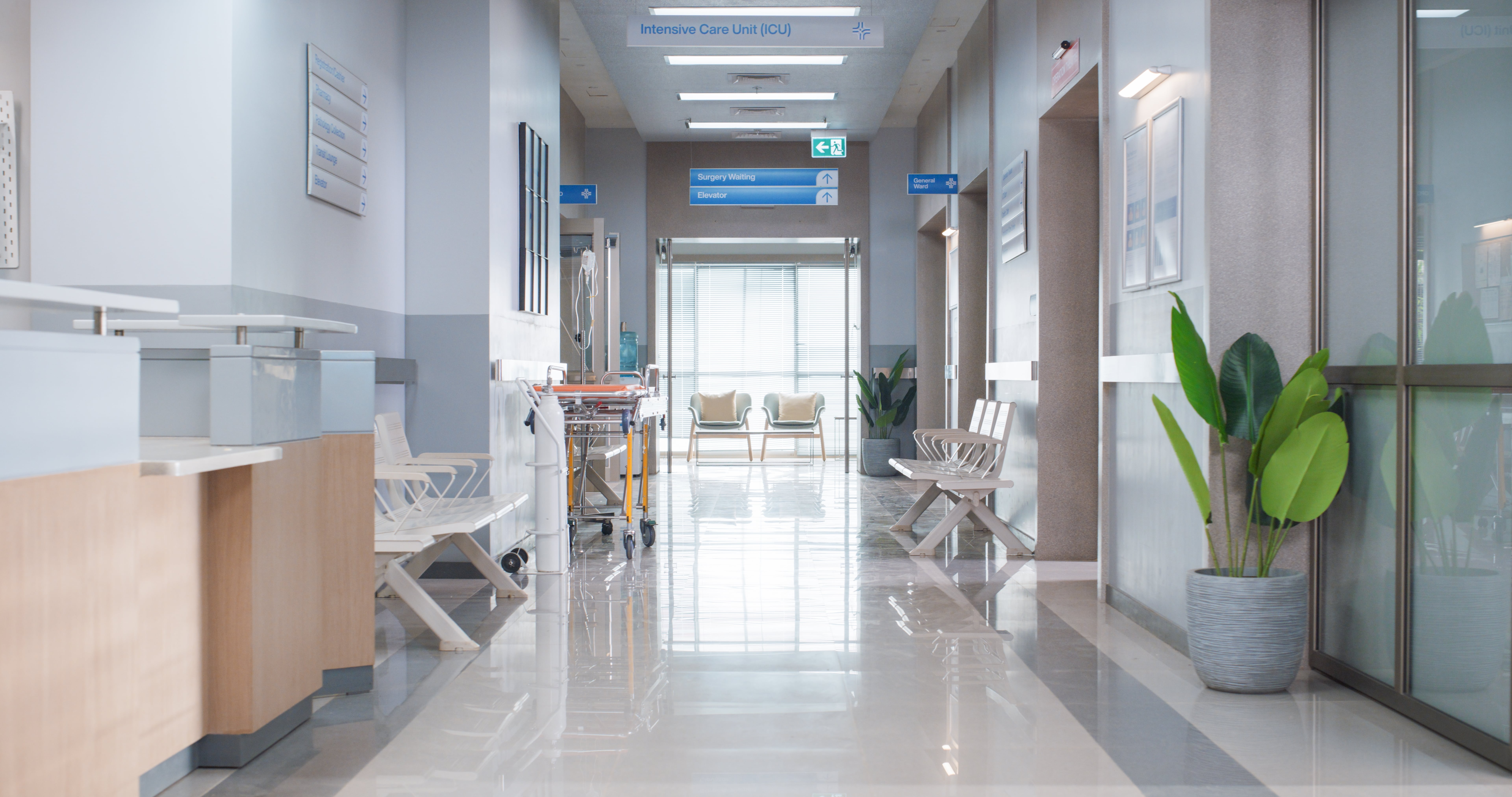
In the healthcare field, the design of physical spaces plays an important role in enhancing patient care, improving outcomes, and enhancing operations. From hospital rooms to administrative offices and specialized treatment centers, effective design directly impacts both staff efficiency and patient well-being. Let’s explore some of the current best practices, ongoing needs, and the future direction of healthcare design.
Best Practices in Healthcare Design
Patient-Centric Spaces
Modern healthcare design prioritizes patient comfort and experience. This includes incorporating natural light, noise reduction strategies, and soothing color palettes to reduce stress and promote healing. Single-patient rooms with private bathrooms have become the standard, offering both privacy and infection control benefits.
Technology Integration
Healthcare environments are increasingly reliant on technology. Design considerations now include proper infrastructure such as patient monitoring equipment and telehealth solutions. Well-planned cable management, power distribution, and data routing help maintain both functionality and aesthetics.
Infection Control and Cleanability
Infection prevention is a top priority in healthcare design. Easy-to-clean surfaces and touchless technology reduce the spread of pathogens. Negative pressure rooms and strategic airflow design also contribute to safer environments.
Staff Efficiency and Ergonomics
Thoughtful layouts consider staff workflow to minimize unnecessary steps and reduce fatigue. Centralized or decentralized nurse stations, strategically placed supply rooms, and ergonomic workspaces enhance efficiency and reduce burnout.
Current Needs and Challenges in Healthcare Design
Enhanced Telehealth Infrastructure
The rise of telehealth requires healthcare facilities to invest in secure, private, and technologically capable spaces. Designing telehealth suites with soundproofing, proper lighting, and AV infrastructure is becoming a necessity.
Improved Accessibility
Large healthcare campuses often struggle with patient and visitor navigation. Clear signage, intuitive layouts, and accessible pathways, including for patients with limited mobility, are essential for reducing confusion and stress.
Reliable Power and Data Distribution
Reliable power and data infrastructure is critical for healthcare facilities, where downtime is not an option. Dependable power systems, backup generators, and strong data distribution networks ensure uninterrupted care.
Patient and Staff Safety
Security concerns continue to grow, requiring design solutions such as controlled access points, surveillance systems, and duress alarms. Additionally, improved lighting and visibility in parking areas and corridors enhance safety.
Future Directions in Healthcare Design
Smart Technology Integration and Automation
Healthcare facilities of the future will feature more automation and smart technologies. This includes AI-powered patient monitoring, automated medication dispensing, and smart devices for real-time data collection. The design challenge will be ensuring seamless connectivity while maintaining clean, organized spaces.
Sustainable and Energy-Efficient Solutions
Sustainability and using energy-efficient systems is becoming a key consideration for healthcare facilities. Features like solar panels, water-saving fixtures, and sustainable building materials will become more prevalent.
Calming Design and Healing Environments
The future of healthcare spaces will increasingly incorporate soothing design elements, such as indoor gardens, green walls, and nature-inspired designs. These features promote mental well-being and support the healing process.
Hybrid and Multi-Purpose Spaces
As healthcare models shift toward outpatient and community-based care, facilities will need more adaptable spaces. Multi-purpose rooms capable of accommodating different specialties or services will maximize space efficiency and flexibility.
Conclusion
The design of healthcare spaces is about creating environments that promote healing, improve staff productivity, and enhance patient experiences. By incorporating strong technology infrastructure and patient-centered principles, healthcare facilities can meet today’s needs while preparing for the challenges of tomorrow. As technology and patient care continue to evolve, the future of healthcare design will prioritize adaptability, efficiency, and wellness at its core.
